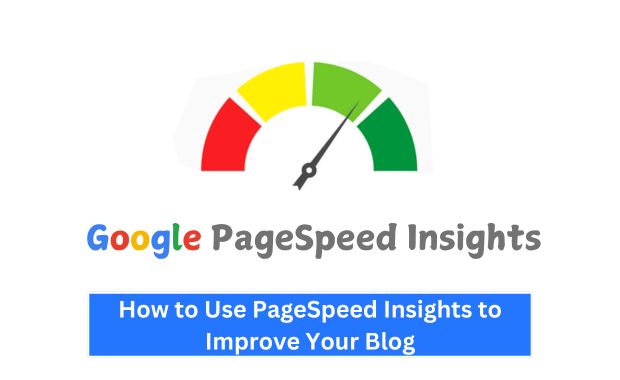In today’s digital landscape, optimizing website performance is no longer optional. A slow blog can frustrate readers, increase bounce rates, and significantly impact search engine rankings. With the advent of Google’s Core Web Vitals and its emphasis on user experience, tools like PageSpeed Insights (PSI) have become indispensable for bloggers.
In this comprehensive guide, we’ll delve into how you can use PageSpeed Insights to optimize your blog in 2025. From understanding the tool’s metrics to implementing actionable improvements, you’ll walk away with a clear roadmap to boost your blog’s performance.

What is PageSpeed Insights?
PageSpeed Insights, developed by Google, is a free tool that measures the performance of web pages on both mobile and desktop devices. It provides actionable recommendations to improve page load speed and overall user experience, using metrics tied to Google’s Core Web Vitals.
Key features include:
- Performance Score: A numeric representation of your page’s speed and user experience.
- Core Web Vitals Assessment: Focused on three main metrics — Largest Contentful Paint (LCP), First Input Delay (FID), and Cumulative Layout Shift (CLS).
- Diagnostics: Suggestions for improving performance, such as reducing unused JavaScript or optimizing images.
- Opportunities: Areas where load time can be reduced and potential user experience gains.
Why PageSpeed Matters for Your Blog in 2025
- Search Engine Optimization (SEO): Google prioritizes fast-loading pages in its search results.
- User Experience (UX): Faster load times lead to happier readers and increased dwell time.
- Revenue: For monetized blogs, improved speed can lead to higher ad impressions and affiliate conversions.
- Mobile Usage: As mobile traffic dominates, optimizing for speed ensures seamless experiences across devices.
Core Metrics of PageSpeed Insights
Here’s a breakdown of the Core Web Vitals that PSI focuses on:
| Metric | Description | Good Threshold |
|---|---|---|
| Largest Contentful Paint (LCP) | Measures the time it takes for the largest visible content to load. | ≤2.5 seconds |
| First Input Delay (FID) | Time from user interaction (e.g., clicking) to browser response. | ≤100 ms |
| Cumulative Layout Shift (CLS) | Measures unexpected visual shifts during page loading. | ≤0.1 |
Step-by-Step Guide to Using PageSpeed Insights
1. Accessing PageSpeed Insights
- Visit PageSpeed Insights.
- Enter your blog’s URL and click “Analyze.”
- Wait for the analysis to complete. PSI will generate reports for both mobile and desktop versions.
2. Understanding the Report
PSI categorizes results into:
- Field Data: Real-world data collected from Chrome users.
- Lab Data: Simulated results from Lighthouse for controlled testing.
Focus on the Opportunities and Diagnostics sections to identify areas needing improvement.
Common Issues and How to Fix Them
Here’s how to tackle the most frequent performance bottlenecks identified by PSI:
1. Optimize Images
| Problem | Solution |
| Images are too large or uncompressed. | Use modern formats like WebP or AVIF. |
| No responsive image loading. | Use the <picture> tag for adaptive images. |
Tools to Use: TinyPNG, ImageOptim, or built-in CMS optimizations.
2. Eliminate Render-Blocking Resources
Render-blocking resources delay content display.
Fixes:
- Minify CSS and JavaScript.
- Use asynchronous loading: Add
asyncordeferto JavaScript files. - Implement critical CSS to prioritize above-the-fold content.
Example of Adding Defer Attribute:
<script src="script.js" defer></script>3. Enable Browser Caching
Caching stores static resources locally, reducing subsequent load times.
How to Enable:
- Configure caching via your server settings.
- Use a plugin like WP Rocket (WordPress).
4. Reduce Unused JavaScript
Unused JavaScript slows down the page.
Solution:
- Identify unnecessary scripts using PSI.
- Remove third-party scripts or plugins you no longer use.
5. Improve Server Response Time
Slow servers hurt performance. Optimize by:
- Switching to a faster hosting provider.
- Implementing a Content Delivery Network (CDN).
Popular CDNs: Cloudflare, AWS CloudFront.
Leveraging Advanced Techniques
1. Use Lazy Loading
Lazy loading delays the loading of non-essential images or videos until they are needed.
Implementation Example:
<img src="image.jpg" loading="lazy" alt="example">2. Preload Key Resources
Preloading critical resources improves perceived load time.
Code Example:
<link rel="preload" href="styles.css" as="style">3. Optimize Fonts
Custom fonts can be a performance drain. Speed them up by:
- Using font-display: swap.
- Subsetting fonts to include only necessary characters.
Measuring Progress Over Time
After implementing changes, consistently monitor your blog’s performance. Use these tools in addition to PSI:
| Tool | Purpose |
| Lighthouse (DevTools) | In-depth performance analysis. |
| GTmetrix | Comprehensive speed and optimization tests. |
| WebPageTest | Advanced testing with waterfall charts. |
Tips for Creating an Engaging Reader Experience
While technical optimization is crucial, don’t lose sight of creating a blog that captivates your audience: How to Fix Common Google Search Console Errors.
1. Prioritize Readability
- Use short paragraphs.
- Include subheadings and bullet points.
- Choose a clean and responsive design.
2. Personalize Content
Share anecdotes or case studies that resonate with your readers.
3. Add Interactive Elements
Features like quizzes, polls, or comment sections enhance engagement.
Sample Case Study: A Blog’s Journey to Optimization
Initial Metrics:
| Metric | Score |
| Performance | 48 |
| LCP | 4.1s |
| FID | 120ms |
| CLS | 0.25 |
Steps Taken:
- Compressed all images using TinyPNG.
- Removed unused plugins.
- Shifted to a high-performance hosting provider.
- Enabled lazy loading.
Results:
| Metric | Score |
| Performance | 92 |
| LCP | 2.3s |
| FID | 90ms |
| CLS | 0.05 |
Conclusion
In 2025, a fast and responsive blog isn’t just a nice-to-have; it’s a necessity. PageSpeed Insights provides the tools and guidance to ensure your blog meets the expectations of both readers and search engines. By following the strategies outlined above, you’ll not only improve performance metrics but also create a seamless, engaging experience for your audience.
Start analyzing your blog with PageSpeed Insights today and stay ahead in the competitive world of blogging! A Beginner’s Guide to Google Search Console Features.